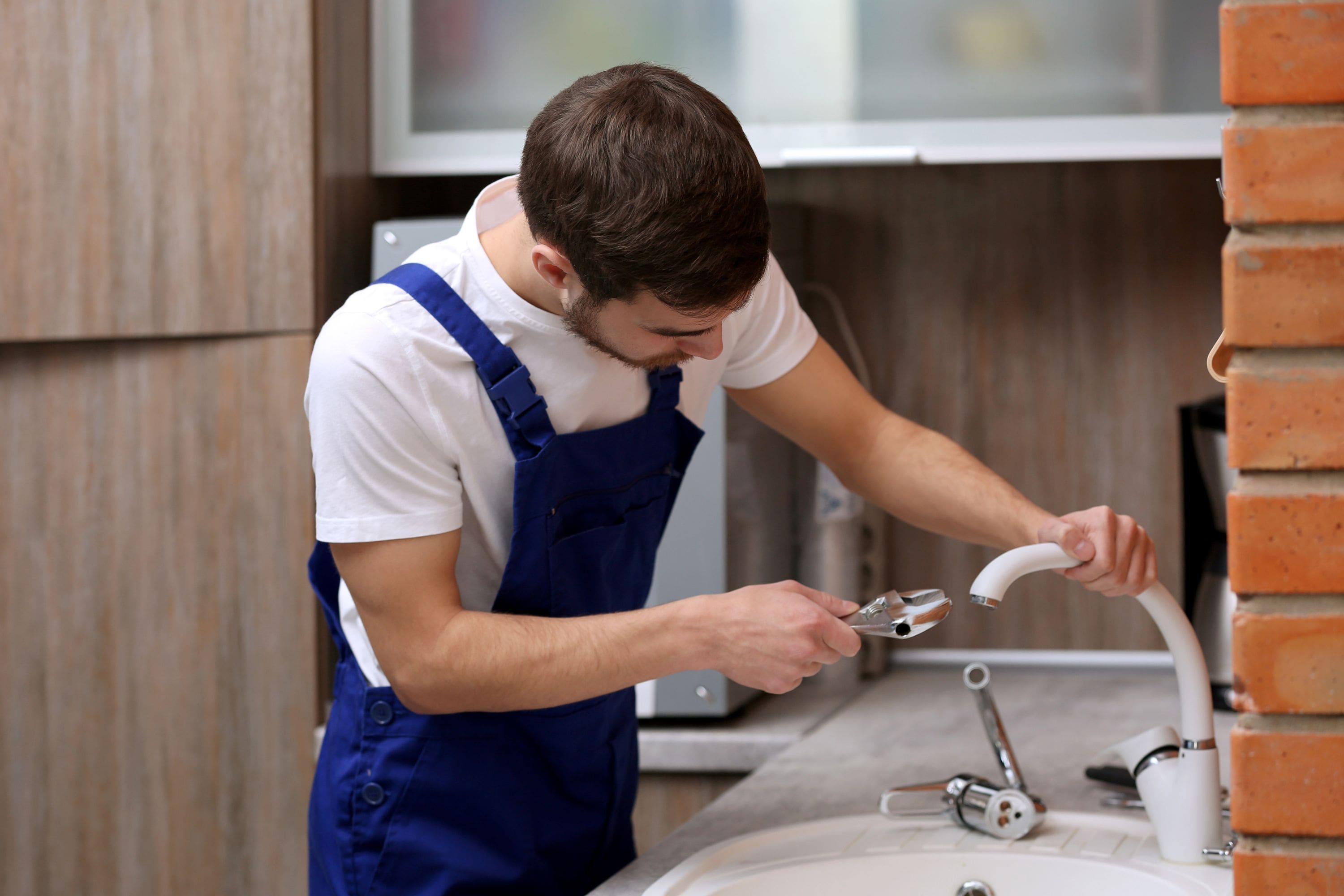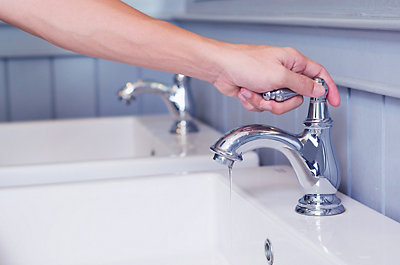The writer is making a few great points relating to 4 Common Reasons for a Leaky Faucet overall in this content just below.
Leaking faucets might look like a minor inconvenience, but their influence goes beyond just the annoyance of the audio. From drainage to sustaining unneeded monetary costs and health risks, overlooking a trickling tap can cause different consequences. In this short article, we'll delve into why it's essential to address this usual house problem immediately and efficiently.
Waste of Water
Ecological Influence
Trickling taps contribute significantly to water wastage. According to the Epa (EPA), a single tap leaking at one drip per second can throw away more than 3,000 gallons of water each year. This not only strains water sources but additionally affects ecological communities and wildlife dependent on them.
Step-by-Step Overview to Dealing With a Dripping Tap
Devices Called for
Prior to attempting to take care of a dripping faucet, gather the essential devices, including an adjustable wrench, screwdrivers, substitute parts (such as washers or cartridges), and plumber's tape.
Typical Tap Issues and Their Solutions
Recognize the kind of faucet and the details problem triggering the drip. Usual issues consist of worn-out washing machines, corroded shutoff seats, or malfunctioning O-rings. Refer to producer guidelines or on the internet tutorials for detailed assistance on repairs.
Financial Expenses
Increased Water Expenses
Past the environmental influence, dripping taps can inflate water expenses substantially. The collected waste over time equates right into higher utility expenditures, which could have been stayed clear of with timely repair work.
Possible Home Damages
Moreover, extended trickling can bring about damage to components and surface areas surrounding the faucet. Water build-up can create discoloration, corrosion, and even structural problems if left neglected, resulting in additional repair service expenses.
Wellness Concerns
Mold and Mildew Growth
The continuous visibility of dampness from a dripping faucet produces an excellent environment for mold and mildew growth. These fungis not only compromise indoor air high quality however likewise posture wellness risks, particularly for individuals with respiratory conditions or allergies.
Waterborne Diseases
Stagnant water in leaking taps can come to be a breeding place for microorganisms and various other virus, boosting the danger of waterborne illness. Pollutants such as Legionella germs prosper in stagnant water, potentially resulting in major illnesses when consumed or breathed in.
Do it yourself vs. Specialist Repair service
Benefits and drawbacks of Do It Yourself Fixing
While some might attempt to take care of a leaking faucet themselves, do it yourself fixings feature their very own collection of difficulties. Without appropriate understanding and tools, do it yourself efforts can worsen the problem or result in incomplete fixings, lengthening the issue.
Benefits of Working With an Expert Plumber
Working with a specialist plumber makes sure that the underlying reason for the dripping tap is dealt with effectively. Plumbers have the competence and equipment to detect and fix faucet problems effectively, saving time and reducing the threat of additional damage.
Ecological Responsibility
Specific Contribution to Conservation
Taking obligation for repairing trickling faucets straightens with wider initiatives toward water conservation and environmental sustainability. Every person's actions jointly make a significant effect on preserving valuable resources.
Lasting Living Practices
By focusing on timely fixings and embracing water-saving habits, people contribute to sustainable living methods that benefit both present and future generations.
Safety nets
Routine Maintenance Tips
To prevent leaking faucets, do regular upkeep such as cleansing aerators, inspecting for leaks, and replacing worn-out parts quickly. Furthermore, consider mounting water-saving devices or upgrading to extra reliable fixtures.
Importance of Prompt Fixes
Addressing leaking taps as quickly as they're seen avoids more water wastage and potential damage, inevitably saving both water and money over time.
Influence On Home Worth
Assumption of Well-Maintained Property
Preserving a building in good condition, consisting of addressing maintenance problems like leaking taps, boosts its regarded worth and desirability among potential buyers or renters.
Influence on Resale Value
Residences with properly maintained plumbing components, including faucets, command higher resale values in the real estate market. Dealing with leaking faucets can contribute to a positive impression during residential or commercial property evaluations and settlements.
Final thought
Attending to a leaking faucet exceeds simple benefit; it's a vital step toward conserving water, reducing economic prices, and securing health and wellness and residential property. Whether with DIY repairs or professional support, acting to deal with trickling faucets is a small yet impactful way to advertise liable stewardship of sources and contribute to a much healthier, extra lasting future.
How to Fix a Leaky Faucet: Step-by-Step Repair Guide
A leaky faucet may seem like a simple annoyance, but if it's not fixed promptly, that leak could cost hundreds to potentially thousands. From water damage to mold, mildew, and high water bills, even a tiny leak can be catastrophic if left unattended. Damage like this can even affect the overall value of your home, so it's important to take the right approach for leaky faucet repair. You may need the help of a plumber in some cases, but we've got a few tips you can try on how to fix a leaky faucet before calling the pros.
Four Faucet Types
When you're learning how to fix a leaky faucet, the first step is knowing what kind of faucet you're working with! There are four common types.
Cartridge Faucets
Cartridge faucets come in one- or two-handled varieties. In one-handled cartridge faucets, hot and cold water combines in a single cartridge. In the two-handled versions, hot and cold water are controlled separately and mixed in the faucet.
Ball Faucets
Ball faucets have a single lever you push up and down to adjust the pressure and rotate to change the temperature. A slotted metal ball controls the amount of water allowed into the spout.
Compression Washer Faucets
They're the oldest type of faucet, but they're still used in many homes — especially older ones. Compression faucets have two separate handles that, when turned, raise or lower the washer that seals a water valve. This valve stops water from flowing through the faucet when it is turned off.
Disc Faucets
Disc faucets rarely need to be repaired due to their maintenance-free design. The water flow is controlled by two discs — the upper one raises and lowers against a fixed lower disc, creating a watertight seal. If your disc faucet starts leaking, you may need to replace the seals or clean residue buildup from the inlets.
Fixing a Leaky Faucet
Step 1: Turn Off the Water
Whether you're learning how to fix a leaky bathtub faucet or how to fix a leaky kitchen faucet, always turn off the water supply to your working area when you're fixing a leak. The last thing you want is a flood added to your list of things to fix.
Look for the shutoff valves below your sink or around the tub and turn them clockwise to stop the water flow. If your faucet doesn't have shutoff valves, you may need to turn off the water for the whole house. Check to make sure it's off by turning the faucet on. If nothing comes out, you're ready to start the repair.
Step 2: Take Apart the Faucet
How you disassemble your faucet depends on the type of fixture you have. You can use a flathead screwdriver to remove the caps on top of the handle or handles for cartridge and compression faucets. Inside, you should see handle screws. Unscrew these with a screwdriver to remove the handle.
Disc- and ball-style faucets will typically have an inlet screw near the handle, and removing that will reveal the interior of the faucet.
Detach the Valve Stem
For cartridge- and compression-style faucets, you'll see the inner valve stem or cartridge once you remove the faucet handles. If you have a compression faucet, unscrew the brass valve stem. If you have a cartridge faucet, pull out the cartridge. If your cartridge has been in place for a while, it may require some tools or extra force to remove it due to mineral deposits.
Examine and Replace Parts
Once you've removed the parts, check them out to confirm what needs to be replaced. You may see corroded rubber washers, O-rings, stems, or cartridges. On a ball-style faucet, check the seats and springs for damage.
If you need to repair a leaky disc faucet, check the inlet and seals on the lower disc.
Once you determine what parts must be replaced, visit your local hardware store. Bring the damaged parts with you to ensure you can purchase the correct components to replace them.
Clean Valves and Faucet Cavity
If you've removed a stem or cartridge, you may notice mineral buildup in the faucet's threads. Use white vinegar to clean the valve seat by soaking it for a few minutes, then scrub it away with a soft toothbrush and rinse with warm water. You can also clean the interior of the faucet in the same way.
Reassemble the Faucet
Once your faucet is cleaned and the required parts have been replaced, it's time to reassemble it. Put the pieces back together and slowly turn the water supply back on. Doing this slowly is crucial because too much initial water pressure can damage the new hardware you've just installed.
https://homewarranty.firstam.com/blog/how-to-fix-leaky-faucet

As a fervent reader on Water Dripping from Faucet: Why and How to Fix, I was thinking sharing that blog post was a good thing. Do you know another person who is interested by the topic? Do not hesitate to share it. Thank you for being here. Come back soon.

Comments on “How It's Essential to Rectify a Broken Faucet”